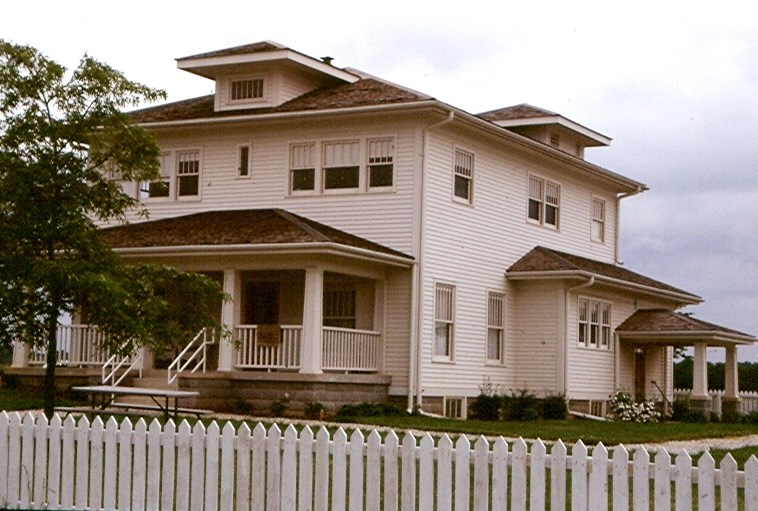You won’t find a style of house more common in middle America than that of the Craftsman Foursquare. One of the reasons the foursquare was so typically American is that you could find large foursquare homes in affluent neighborhoods and on small inner city lots. Cheap and easy to build, the Craftsman foursquare made use of every available bit of space on small city lots and you will find it in neighborhoods across the country.
History of the Foursquare
The foursquare first appeared around 1890 and remained popular for the next 40 years and like other Craftsman style homes it was a reaction to the ostentatious homes built in the Victorian era. The foursquare is often referred to as the box house, the cube, the double cube and the Prairie Box, and it shared many feature with Craftsman Prairie style homes built by Frank Lloyd Wright. Like the Craftsman Bungalow the foursquare was available through mail order from Sears and Aladdin.

Wright even did his own versions of the foursquare, the Robert M Lamp house built in 1910 being one of the most famous. He also designed several two story models for the American System-Built Homes, the foursquare fit with Wright’s plans for affordable housing and organic architecture. Wright wasn’t the only architect to create his own version of the foursquare Walter Burley Griffin, also from the Prairie school, designed foursquare homes.
Feature of the Foursquare
• BOXED SHAPE
The house is square shaped with the width smaller than the depth, usually two stories but with usable attic space.
• HIPPED ROOF
Most Foursquares have steep or hipped pyramid shaped roofs.
• LARGE WINDOWS
Like other Craftsman styles the Foursquare featured plenty of windows allowing in plenty of natural light.
• WIDE FRONT PORCH
The porch usually extended to the full width of the house they also usually had a wide set of stairs either in the center or off to the side.
• UNASSUMING STYLE
You will find Foursquares in more affluent neighborhoods with tiled roofs, big bay windows and lots of art glass, but the foursquare was typically a working man’s home. The style was more often unassuming with simple motifs and more of an Arts & Crafts influence.
Inside the Foursquare
The Foursquare got it’s name from the interior layout of the house, a large square house, two stories with 4 square rooms located in each corner with a central staircase. and both floors had pretty much the same layout. Upstairs had a very simple layout with 4 bedrooms, one in each corner and a bathroom in between the 2 smallest rooms.
Coming into the home from the porch you would have a foyer area with a living room in one front corner of the house and a parlor in the other front corner. Eventually the parlor and living rooms were combined to make one large living room. Dining rooms and kitchens were located in the back of the house.

Photo Credit: Public domain image from Arttoday.com
The interior layout of the Foursquare changed quite a bit during their popularity. In the very early 20th century indoor plumbing wasn’t always available so the upstairs bathroom, was often just a closet or storage space. In the downstairs the kitchen often extended further into the back yard making room for a pantry or some type of cold storage.
The interior also had many of the design features typical of Craftsman styling, there were exposed wooden beams and built in seating and shelving. If you ordered your Craftsman from Sears as many people did originally, you could add room dividing colonnades and wooden kitchen cabinets.
The Revival
Craftsman design has been enjoying a revival lately as once again style returns to simpler design, but with modern conveniences. In larger urban areas space is again at a premium and Craftsman homes, including the Foursquare work well on small city lots. Unlike the original Craftsman homes, the detailing like stone accents are now made from synthetic material to save costs. You get the appearance of a Craftsman without the craftsmanship that went into them.